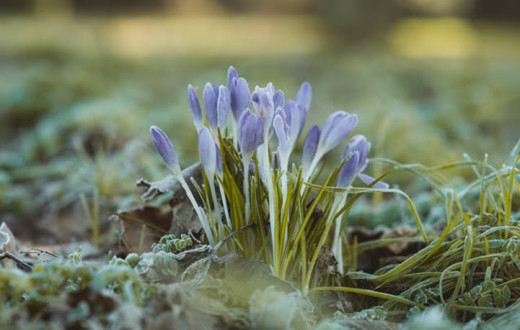More about Goshala
Goshala : A Valuable Shelter
‘Go’ (pronounced ‘gau’) means cow, and ‘shala’ means shelter. Until recent times every village in India had a goshala. Even today every villager who can afford it, keeps at least one cow. Some have related the high suicide rates among Indian farmers to the fact that cows are no longer kept by them.
The Indian Cow: A Veritable Treasure House
In India bulls are used for tilling fields and as a means of transport. A whole gamut of activities: agricultural, religious and economic revolve around a cow.
Viewed by Ayurveda, cow milk is both sattvic (of purifying quality) and nutritious. Goshala milk is the healthiest milk available. Usually, store bought ‘dairy’ milk contains mixtures of milk from various breeds, including buffalo milk, which is high in fat content and tamasic (of lethargic quality). No Hindu ritual (puja) is complete without Panchagavya or the five sacred elements from the cow: milk, clarified butter, curd, urine and dung. While performing homa (fire ritual), native cow’s ghee and dung are a must. As Swami Soumyatej puts it, “The purest ghee and dung are necessary for the efficacy of the agnihotra, as this homa is like conducting an experiment in which the results depend on the inputs. Any other cow’s ghee and dung will not give the purifying effects.”
Cow dung serves priceless functions. For organic farming, manure is the best fertilizer containing natural pesticides. Dried dung cakes are used as fuel for cooking. Cow dung lined on the floor and walls of homes provides thermal insulation in cold weather, shields radiation and repels insects. Mixed in water and applied as thin washes, it works as a good disinfectant. Dung collected in a special vat creates biogas, which may be used to provide a stable source of electricity in villages.
Distilled cow’s urine (gomutra) is a miracle medicine that cures a broad spectrum of diseases: from skin disorders to diabetes to cancer. Sri Sri Ayurveda Hospital and Sri Sri Panchakarma have demonstrated the success of Gomutra in curing chronic ailments.
The goshala model is environmentally sustainable and profitable to farmers. Each product of a goshala is valuable and can be sold. Native breeds require a minimal amount of hay fodder, which can easily be procured from the farm as a by-product.
Indigenous Versus Crossbreed
During the 1970’s there was an open flood of exotic cows. Crossbred cows were in vogue for their higher milk yields. However, the quality of milk was not kept in mind. Some crucial points were missed: these cows are more susceptible to diseases. The hot, tropical climate of India doesn’t suit them. The food is incompatible. Jersey and other crossbreds suffer from gas and diarrhea. They consume great amounts of fodder. As a result they are more expensive to maintain. Besides, they have a short lactation period, after which they are killed for meat. Apart from milk and meat, they make no other contribution.
With a little intelligent manipulation (by selecting the best pedigree) indigenous cows can attain equally high levels of milk production, as has been demonstrated by countries like Brazil and Argentina(which have been importing and breeding Indian cows of pure breed).The best bulls of India, such as the legendary Brahmani bull, can be found there.
Need of the Hour
A goshala is an integral part of an ashram. The Art of Living International Headquarters in Bangalore, Goshala was set up with the aim of preserving pure breeds. From more than a hundred varieties of cows in India there are now only 30 varieties. The Goshala houses over a hundred indigenous cows of different breeds such as the Ongol from Andhra Pradesh, Kangayan from Tamil Nadu, the Gir from Gujarat and the Sahiwal from Punjab.
According to Gurudev Sri Sri Ravi Shankar, for determining a healthy count for cows, the appropriate ratio is 20 cows per 100 people. Due to cattle not producing high milk yields, they are being slaughtered. This drops the number of cattle, affecting the genetic pool. Soon, there will be only a 5 cow ratio per 100 people. The goshala hopes to reverse this statistic.
Conserving the Indian breeds’ germplasm, is something that needs to be taken up with greater dedication. Finding 100% pure bred cows is a difficult task due to so much trans-breeding. The Art of Living goshala also provides a model for reviving and promoting organic, zero budget farming, thereby diverting the Indian farmer from a life of hardship and debt.
There is implicit truth in what the ancient Indian texts say: ‘If the cow is kept happy, the land is prosperous and the people are happy.’ It is a chain reaction. That’s ancient wisdom and The Art of Living is making this wisdom a reality.
Cow dung serves priceless functions. For organic farming, manure is the best fertilizer containing natural pesticides. Dried dung cakes are used as fuel for cooking. Cow dung lined on the floor and walls of homes provides thermal insulation in cold weather, shields radiation and repels insects. Mixed in water and applied as thin washes, it works as a good disinfectant. Dung collected in a special vat creates biogas, which may be used to provide a stable source of electricity in villages.
Distilled cow’s urine (gomutra) is a miracle medicine that cures a broad spectrum of diseases: from skin disorders to diabetes to cancer. Sri Sri Ayurveda Hospital and Sri Sri Panchakarma have demonstrated the success of Gomutra in curing chronic ailments.
The goshala model is environmentally sustainable and profitable to farmers. Each product of a goshala is valuable and can be sold. Native breeds require a minimal amount of hay fodder, which can easily be procured from the farm as a by-product.





























